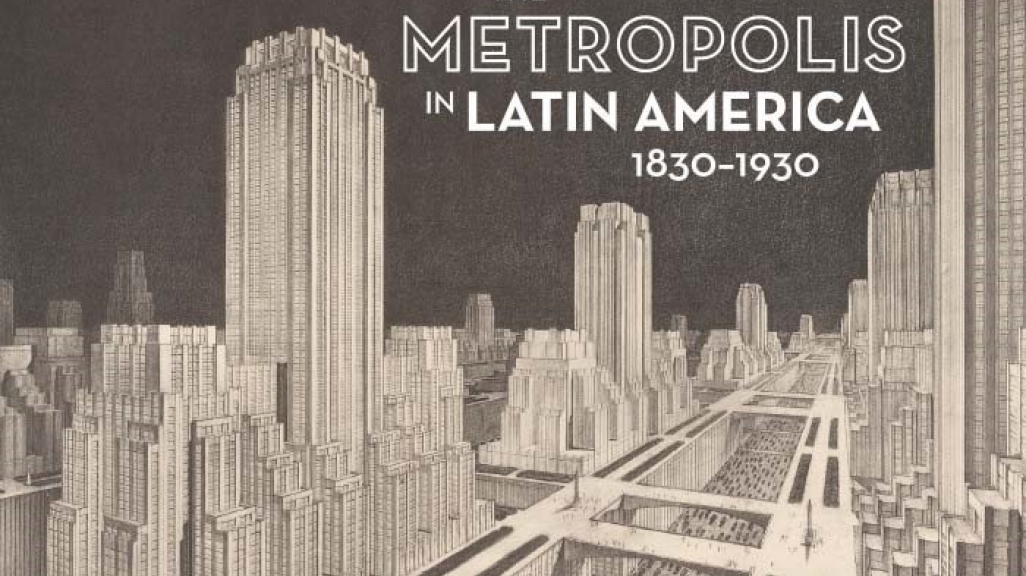The Metropolis in Latin America, 1830–1930
On view:
through
The Metropolis in Latin America, 1830–1930
Over the course of a century, rapid urban growth, sociopolitical upheavals, and cultural transitions reshaped the architectural landscapes of major cities in Latin America. Focusing on six capitals—Buenos Aires, Havana, Lima, Mexico City, Rio de Janeiro, and Santiago de Chile—The Metropolis in Latin America, 1830–1930, presents the colonial city as a terrain shaped by Iberian urban regulations, and the republican city as an arena of negotiation of previously imposed and newly imported models, which were later challenged by waves of indigenous revivals. Photographs, prints, plans, and maps depict the urban impact of key societal and economic transformations, including the emergence of a bourgeois elite, and extensive infrastructure projects, rapid industrialization, and commercialization.
Explore more about the exhibition.
This exhibition was co-curated by Idurre Alonso and Maristella Casciato and organized by the Getty Research Institute in Los Angeles.
Image: The City of the Future: Hundred Story City in Neo-American Style, Francisco Mujica, 1929. From Francisco Mujica, History of the Skyscraper (Paris, 1929), pl. 134. The Getty Research Institute, 88-B34645.
Americas Society's new exhibition explores the impact that a century of accelerated urbanization as well as political and social transformations had in the architectural landscapes of six Latin American capitals.
La nueva exhibición de Americas Society explora el impacto de un siglo de rápida urbanización y transformaciones políticas y sociales en el paisaje arquitectónico de seis capitales latinoamericanas.
A exposição da Americas Society explora o impacto que um século de urbanização acelerada tiveram nas paisagens arquitetônicas de seis capitais latino-americanas...
Learn about Americas Society's upcoming exhibition exploring the transformation of six Latin American capitals from colonial cities into monumental republican metropolises.
Metropolis es un esfuerzo que revela la importancia de la investigación histórica", explicó la Directora de Artes Visuales y Curadora en Jefe de Americas Society, Gabriela Rangel.
The New York Times offers its final review of the Metropolis in Latin America, 1830-1930, exhibition which was on display at Americas Society until June 30.
The exhibition has been organized by the Getty Research Institute, Los Angeles, and was previously on view as part of Pacific Standard Time: LA/LA at the Getty Center (September 16, 2017-January 7, 2018).
Americas Society gratefully acknowledges the support from the Arts of the Americas Circle members: Estrellita Brodsky; Galeria Almeida e Dale; Kaeli Deane, Phillips; Diana Fane; Boris Hirmas; Isabella Hutchinson; Carolina Jannicelli; Roberto Redondo and Carlos Manso; Erica Roberts; Sharon Schultz; Herman Sifontes; Axel Stein, Sotheby’s; Edward J. Sullivan; and Juan Yarur Torres.
The presentation of The Metropolis in Latin America, 1830-1930, at Americas Society is made possible by the New York State Council on the Arts with the support of Governor Andrew M. Cuomo and the New York State Legislature, and is supported, in part, by public funds from the New York City Department of Cultural Affairs in partnership with the City Council.
Additional support is provided by The Achelis and Bodman Foundation, the Smart Family Foundation of New York, Genomma Lab Internacional, The Cowles Charitable Trust, and by AMEXCID, the Consulate General of Mexico, and the Mexican Cultural Institute of New York. In-kind support is provided by the Consulado General y Centro de Promoción de la República Argentina en Nueva York.




















